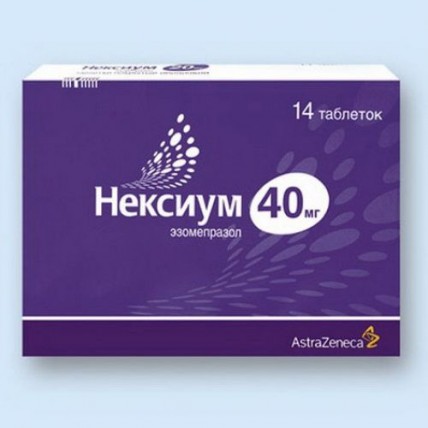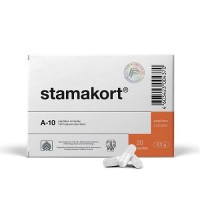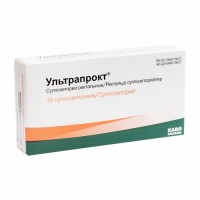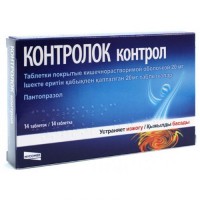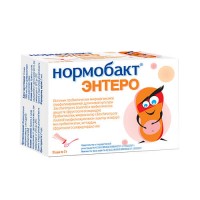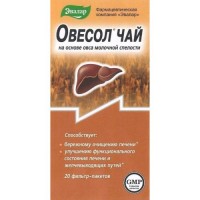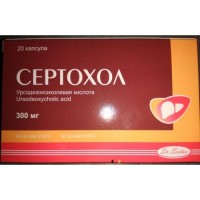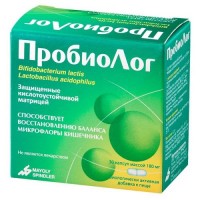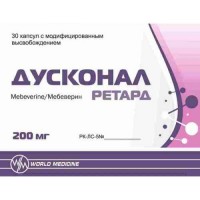Nexium 14s 40 mg coated tablets
- $60.40
The instruction for medical use
of NEKSIUM medicine
the Trade name
Neksium
Mezhdunarodnoye the unlicensed
name Esomeprazole Dosage Form
of the Tablet, coated, 20 mg and 40 mg
Structure
One tablet contains
active agent - magnesium esomeprazole trihydrate of 22.30 mg or 44.50 mg that there correspond 20 mg and 40 mg of esomeprazole,
excipients: glyceryl monostearate 40-55, a hypro rod, a gipromelloza, ferrous oxide red, ferrous oxide yellow (for a dosage of 20 mg), magnesium stearate, methacrylic and etakrilovy acids copolymer (1:1), cellulose microcrystalline, paraffin synthetic, a macrogoal, polysorbate 80, krospovidon, the sodium stearylfumarating sugar spherical granules, the titan dioxide, talc, triethyl citrate.
Description
of the Tablet of 20 mg: light pink oblong biconvex shape, coated, with an engraving of 20 mG on one party and A/EH on other party.
Tablets of 40 mg: pink tablets of oblong biconvex shape, coated, with an engraving of 40 mG on one party and A/EI on other party.
Pharmacotherapeutic group
Antiulcerous drugs and drugs for treatment of a gastroesophageal reflux (GORD). Inhibitors of the protonew pump. Esomeprazole.
The ATX A02BC05 code
the Pharmacological
Pharmacokinetics Esomeprazole properties is unstable in acidic environment therefore for oral administration use the tablets containing drug granules which cover is resistant to effect of gastric juice. Drug is quickly absorbed: the maximum concentration in plasma is reached in 1-2 hours after reception. The absolute bioavailability of esomeprazole after single dose of a dose of 40 mg is 64% and increases up to 89% against the background of daily reception once a day. For a dose of 20 mg of esomeprazole these rates are 50% and 68%, respectively. Distribution volume at equilibrium concentration at healthy people is about 0.22 l/kg of body weight. Esomeprazole contacts proteins of plasma for 97%.
Meal slows down and reduces absorption of esomeprazole in a stomach, however it has no significant effect on efficiency of inhibition of secretion of hydrochloric acid.
Esomeprazole is exposed to metabolism with participation of a system of P450 cytochrome (CYP). The main part is metabolized with the participation of specific polymorphic CYP2C19 isoform, at the same time hydroxies - and demetilirovanny metabolites of esomeprazole are formed. Metabolism of the rest is carried out by other specific CYP3A4 isoform, at the same time is formed sulfoderivative esomeprazole, being the main metabolite defined in plasma.
The parameters specified below reflect, generally the nature of pharmacokinetics at patients with active CYP2C19 enzyme (patients with active metabolism).
The general clearance is about 17 l/h after single dose of drug and 9 l/h – after multiple dose. Elimination half-life makes 1.3 hours at systematic reception once a day. The area under a curve concentration time (AUC) increases at repeated intake of esomeprazole. Dose-dependent increase in AUC at repeated intake of esomeprazole has nonlinear character that is a consequence of decrease in metabolism at the first passing through a liver and also decrease in system clearance probably of CYP2C19 enzyme caused by inhibition esomeprazole and/or its sulfocontaining metabolite. At daily reception once a day esomeprazole is completely removed from blood plasma in a break between receptions and does not kumulirut.
The main metabolites of esomeprazole do not influence secretion of gastric acid. At oral administration up to 80% of a dose it is removed in the form of metabolites with urine, other quantity is removed with excrements. In urine less than 1% of not changed esomeprazole are found.
Features of pharmacokinetics in some groups of patients: Approximately at 2.9±1.5% of the population the activity of an isoenzyme of CYP2C19 is reduced. Such patients have an esomeprazole metabolism, is generally carried out as a result of action of CYP3A4. At systematic reception of 40 mg of esomeprazole once in day the average AUC value for 100% exceeds value of this parameter at patients with superactivity of an isoenzyme of CYP2C19. Average values of the maximum concentration in plasma at patients with reduced activity of an isoenzyme are increased approximately by 60%. The specified features do not influence a dose and a route of administration of esomeprazole.
At patients of advanced age (71-80 years) the metabolism of esomeprazole does not undergo significant changes.
After single dose of 40 mg of esomeprazole the average AUC value at women for 30% exceeds that at men. At daily administration of drug once a day differences in pharmacokinetics at men and women are not noted. The specified features do not influence a dose and a route of administration of esomeprazole.
At patients with a slight and moderate liver failure the metabolism of esomeprazole can be broken. At patients with a heavy liver failure the speed of metabolism is reduced that leads to increase in AUC value for esomeprazole twice.
Studying pharmacokinetics at patients with a renal failure was not carried out. As through kidneys the removal not of the esomeprazole, but its metabolites is carried out, it is possible to believe that metabolism of esomeprazole at patients with a renal failure does not change.
Children at the age of 12-18 years after repeated reception have 20 mg and 40 mg of esomeprazole the AUC value and time of achievement of the maximum concentration (tmax) in blood plasma was similar to AUC and tmax values at adults.
The pharmacodynamics
Neksium reduces secretion of acid in a stomach by specific inhibition of the proton pump in covering cells, is omeprazolum S-isomer. S- and R-isomers of omeprazolum have similar pharmakodinamichesky activity.
The action mechanism
Neksium is the weak basis, collects in secretory tubules of covering cells in acidic environment where it is activated and inhibits the proton pump – H+,K enzyme +-ATFazu. Esomeprazole inhibits both basal, and stimulated secretion of acid. Effect of esomeprazole develops within 1 hour after oral administration of 20 mg or 40 mg. At daily administration of drug within 5 days in a dose of 20 mg once a day average maximum concentration of acid after stimulation by Pentagastrinum decreases by 90% (at measurement of concentration of acid in 6-7 hours after administration of drug for the 5th day of therapy). At patients with the gastroesophageal reflux disease (GRD) and existence of clinical symptoms in 5 days of daily oral administration of esomeprazole in a dose of 20 mg or 40 mg the value intragastric rn higher than 4 was maintained within, on average, 13 and 17 hours from 24 hours. Against the background of intake of esomeprazole in a dose of 20 mg a day the value intragastric rn higher than 4 was maintained not less than 8, 12 and 16 hours at 76%, 54% and 24% of patients, respectively. For 40 mg of esomeprazole this ratio makes 97%, 92% and 56%, respectively.
The therapeutic effect reached inhibition of secretion of acid At Neksium's reception in a dose of 40 mg healing a reflux esophagitis
is caused approximately at 78% of patients in 4 weeks of therapy and at 93% - in 8 weeks of therapy.
Treatment by Neksium in a dose of 20 mg 2 times a day in a combination with the corresponding antibiotics within one week leads to a successful eradikation of Helicobacter pylori approximately at 90% of patients. Patients with an uncomplicated peptic ulcer after a week eradikatsionny course do not need the subsequent monotherapy by anti-secretory drugs for healing of an ulcer and elimination of symptoms.
Indications
- a gastroesophageal reflux disease: an erosive reflux esophagitis, the long-term supporting treatment after healing erosive a reflux - an esophagitis for prevention of a recurrence, symptomatic treatment of a gastroesophageal reflux disease
- Helicobacter pylori eradikation as a part of the combined antibacterial therapy in a peptic ulcer of a stomach and the duodenum associated with Helicobacter pylori
- long kislotopodavlyayushchy therapy at the patients who had bleeding from a round ulcer (after intravenous use of the drugs lowering secretion of glands of a stomach for prevention of a recurrence)
- the gastropathies connected with long intake of non-steroidal anti-inflammatory drugs
- Zollingera-Ellison's syndrome or other states which are characterized by pathological hypersecretion including, and idiopathic hypersecretion
- prevention of the stomach ulcer and a duodenum tied with intake of non-steroidal anti-inflammatory drugs at the patients belonging to
the Route of administration risk group and doses
Inside. It is necessary to swallow of a tablet entirely, washing down with water. Tablets cannot be chewed or split up. For patients with difficulty of swallowing it is possible to dissolve tablets in half of glass of still water (it is not necessary to use other liquids as the protective cover of microgranules can be dissolved), stirring to a tablet raspadeniye then the suspension of microgranules should be drunk at once or within 30 minutes then again to fill a glass with water half, to stir the remains and to drink. It is not necessary to chew or split up microgranules. Patients who cannot swallow tablets should be dissolved in water and to enter via the nazogastralny probe.
Adults and children since 12 years
the Gastroesophageal reflux disease
On 40 mg once a day within 4 weeks. The additional 4-week course of treatment in cases when after the first course the healing of an esophagitis does not occur is recommended or symptoms remain.
The long-term supporting treatment after healing erosive a reflux esophagitis for prevention of a recurrence
On 20 mg once a day.
Symptomatic treatment of a gastroesophageal reflux disease
of 20 mg once a day – to patients without esophagitis. If after 4 weeks of treatment the symptoms do not disappear, it is necessary to perform additional examination of the patient. After elimination of symptoms of a disease it is possible to switch over to the mode of administration of drug if necessary, i.e. to accept Neksium 20 mg once a day when resuming symptoms. For the patients accepting NPVP and belonging to risk group of development of stomach ulcer or a duodenum it is not recommended to prolong treatment in the mode if necessary.
Adults
as a part of combination therapy for an eradikation with Helicobacter pylori treatment of an ulcer of the duodenum associated with Helicobacter pylori: Neksium of 20 mg, amoxicillin of 1 g and klaritromitsin 500 mg. All drugs are taken two times a day within 1 week.
Long kislotopodavlyayushchy therapy at the patients who had bleeding from a round ulcer (after intravenous use of the drugs lowering secretion of glands of a stomach for prevention of a recurrence)
Neksium of 40 mg of 1 times a day within 4 weeks after the end of intravenous therapy by the drugs lowering secretion of glands of a stomach.
Patients,
Treatment of the stomach ulcer connected with reception of NPVS is long the accepting NPVS: Neksium of 20 mg or 40 mg once a day. Duration of treatment is 4-8 weeks.
Prevention of the stomach ulcer and a duodenum tied with reception
of NPVS Neksium of 20 mg or 40 mg once a day.
The states connected with pathological hypersecretion, including, Zollingera-Ellison's syndrome and idiopathic hypersecretion
the Recommended initial dose - Neksium of 40 mg two times a day.
Further the dose is selected individually, duration of treatment is defined by a clinical picture of a disease.
There is an experience of use of drug in doses up to 120 mg 2 times a day.
Administration of drug via nazogastralny
probe 1. Place a tablet in the syringe and fill the syringe of 25 ml of water and about 5 ml of air. For some probes the cultivation of drug in 50 ml of drinking water can be required to prevent contamination of the probe tablet granules.
2. Shake up syringe contents within about two minutes for dissolution of a tablet.
3. You hold the syringe a tip up and be convinced that the tip did not get littered.
4. Enter a syringe tip into the probe, continuing to hold it directed up.
5. Stir up the syringe and turn it a tip down. Immediately enter 5-10 ml of the dissolved drug into the probe. After introduction return the syringe to former situation and shake up (the syringe has to be kept by a tip for avoidance of contamination of a tip up).
6. Turn the syringe a tip down and enter 5-10 more ml of drug into the probe. Repeat this operation until the syringe is empty.
7. In case of the rest of a part of drug in the form of a deposit in the syringe fill the syringe of 25 ml of water and 5 ml of air and repeat the operations described in Paragraph 5.
Side effects
Frequent (& gt, 1/100, & lt, 1/10)
- a headache
- an abdominal pain, diarrhea, a meteorism, nausea, vomiting, a constipation
Less frequent (& gt, 1/1000, & lt, 1/100)
- dermatitis, an itching, urticaria, rash
- dizziness
- dryness in a mouth
- insomnia, paresthesia, drowsiness
- increase in activity of hepatic enzymes
- peripheral hypostases
- illegibility of sight
Rare (& gt, 1/10000, & lt, 1/1000)
- a leukopenia, thrombocytopenia
- allergic reactions: fever, a Quincke's disease, anaphylactoid reaction / shock
- excitement, a depression, an indisposition, confusion
- disturbance of taste
- a hyponatremia
- a bronchospasm
- stomatitis and gastrointestinal candidiasis
- hepatitis with (or without) jaundice
- a photosensitization, an alopecia
- arthralgias, myalgias, risk of developing spinal fractures, necks of a hip, a wrist
- perspiration
Very rare (& lt, 1/10000)
- an agranulocytosis, a pancytopenia
- hallucinations (mainly at the weakened patients),
- a liver failure, hepatic encephalopathy
- a multiformny exudative erythema
- Stephens-Johnson's syndrome
- a toxic epidermal necrolysis
- muscle weakness
- interstitial nephrite
- a gynecomastia
- a gipomagneziyemiya, a heavy gipomagneziyemiya can lead agressive behavior to a hypocalcemia
- microscopic colitis
Was reported about separate cases of an irreversible disorder of vision at reception of high doses at patients in critical condition, relationship of cause and effect is not established with administration of drug.
Contraindications
- hypersensitivity to esomeprazole, the substituted benzimidazoles or other ingredients which are a part of drug
- hereditary intolerance of fructose
- glyukozo-galaktozny malabsorption or sakharazo-izomaltazny insufficiency
- a concomitant use with nelfinaviry
- children's age up to 12 years in GERD
- children's and teenage age up to 18 years according to other indications, except
a gastroesophageal reflux disease
With care
- the heavy renal failure
Medicinal interactions
by esomeprazole and other inhibitors of a proton pomp can lead Suppression of acidity of gastric juice against the background of treatment to change of absorption of drugs which absorption depends on acidity of the environment. Esomeprazole, as well as other drugs reducing secretion of acid in a stomach can lead to decrease in absorption of a ketokonazol, itrakonazol and erlotinib. At the same time at joint intake of esomeprazole with digoxin, concentration of the last can increase. At joint reception of IPP and methotrexate, increase in concentration at some patients is noted. At use of a methotrexate in high doses it is necessary to suspend intake of esomeprazole.
In cases when atazanavir and nelfinavir were accepted along with omeprazolum, lowering of the level of these drugs in serum therefore their combined use it is necessary to avoid was noted. Joint prescribing of omeprazolum in a dose of 40 mg in once day and an atazanavira of 300 mg / ritonavira led 100 mg to significant decrease in AUC values and also maximum and minimum concentration of an atazanavir. Increase in a dose of an atazanavir up to 400 mg did not compensate influence of omeprazolum on concentration of an atazanavir. Therefore it is not necessary to appoint esomeprazole together with atazanaviry, and co-administration of esomeprazole and a nelfinavir is excluded.
Esomeprazole inhibits CYP2C19 - the main enzyme participating in his metabolism. Respectively, combined use of esomeprazole with other drugs in which metabolism CYP2C19, such as diazepam, to tsitalopra, Imipraminum, klomipramin, Phenytoinum, etc. takes part can lead to increase in concentration of these drugs in plasma that, in turn, can demand a dose decline. It is especially important to remember this interaction at Neksium's appointment in the mode as necessary. At joint reception of 30 mg of esomeprazole and diazepam which is CYP2C19 cytochrome substrate, decrease in clearance of diazepam by 45% is noted.
Prescribing of esomeprazole in a dose of 40 mg led to increase in residual concentration of Phenytoinum at patients with epilepsy for 13%. In this regard it is recommended to control concentration of Phenytoinum in plasma in an initiation of treatment esomeprazole and at its cancellation.
Joint intake of warfarin from 40 mg of esomeprazole does not lead to change of time of coagulation at patients, is long accepting warfarin. However it was reported about several cases of clinically significant increase in the INR (the international normalized relation) index at combined use of warfarin and esomeprazole. Therefore at the beginning and upon termination of combined use of these drugs it is recommended to control MNO.
Joint reception of a tsizaprid from 40 mg of esomeprazole leads to increase in values of pharmacokinetic parameters of a tsizaprid at healthy volunteers: AUC - for 32% and elimination half-life for 31%, however the maximum concentration of a tsizaprid in plasma at the same time considerably does not change. Insignificant lengthening of an interval of QT which was observed at monotherapy tsizapridy at Neksium's addition did not increase.
Neksium does not cause clinically significant changes of pharmacokinetics of amoxicillin and quinidine.
Joint appointment with esomeprazole led to increase in concentration of a takrolimus in serum.
Researches on assessment of short-term combined use of esomeprazole and Naproxenum or a rofekoksib did not reveal clinically significant pharmacokinetic interaction.
CYP2C19 and CYP3A4 take part in metabolism of esomeprazole. Combined use of esomeprazole with klaritromitsiny (500 mg 2 times a day) which inhibits CYP3A4, leads to increase in AUC value of esomeprazole twice. Combined use of esomeprazole and the combined CYP3A4 and CYP2C19 inhibitor, for example, the vorikonazola, can lead to more than 2-fold increase in AUC value for esomeprazole. In such cases the esomeprazole dose adjustment is not required.
It is necessary to avoid combined use of esomeprazole and klopidogrelya.
Special instructions
in the presence of any disturbing symptoms (for example, such as considerable spontaneous loss of body weight, repeated vomiting, a dysphagy, vomiting with impurity of blood or a melena) and also in the presence of stomach ulcer (or at suspicion of stomach ulcer) it is necessary to exclude existence of a malignant new growth as treatment by Neksium can lead to smoothing of symptomatology and delay diagnosis.
The patients taking the drug during the long period (especially over a year) have to be under regular observation of the doctor.
The patients accepting Neksium as necessary have to be instructed about need to contact the doctor at change of nature of symptoms. In view of fluctuations of concentration of esomeprazole in plasma when assigning therapy as necessary, it is necessary to consider interaction of drug with other medicines.
When assigning Neksiuma for an eradikation of Helicobacter pylori has to be considered a possibility of medicinal interactions for all components of triple therapy. Klaritromitsin is powerful CYP3A4 inhibitor therefore when assigning eradikatsionny therapy the patients receiving other drugs which are metabolized with participation of CYP3A4 (for example, a tsisaprida) need to consider possible contraindications and interactions of a klaritromitsin with these medicines.
The tablets Neksiuma contain sucrose therefore they are contraindicated to patients with hereditary intolerance of fructose, glyukozo-galaktozny malabsorption or sakharazo-izomaltazny insufficiency.
Treatment by inhibitors of a proton pomp can lead to insignificant increase in risk of developing of the gastrointestinal infections caused by Salmonella and Campylobacter.
At the patients taking the anti-secretory drugs during a long period the formation of ferruterous cysts in a stomach is more often noted. These phenomena are caused by physiological changes in result of the expressed inhibition of secretion of acid. Cysts benign also have reversible character.
During the conducted comparative researches with Neksium ranitidine showed the best efficiency concerning healing of stomach ulcers at the patients receiving non-steroidal anti-inflammatory drugs (NPVP) including selection inhibitors tsikloksigenazy-2 (TsOG-2).
Renal failure: dose adjustment of drug is not required.
Experience of use of Neksium for patients with a heavy renal failure is limited, in this regard, when prescribing drug it patients should be careful.
Liver failure: in a slight and moderate liver failure the dose adjustment of drug is not required.
For patients with a heavy liver failure it is not necessary to exceed the maximum daily dose - 20 mg.
Patients of advanced age: dose adjustment of drug is not required.
Pregnancy and a lactation
it is necessary to Appoint drug pregnant only when the expected advantage for mother exceeds possible risk for a fruit.
It is unknown whether esomeprazole with breast milk is emitted therefore it is not necessary to appoint Neksium during feeding a breast.
Features of influence of medicine on ability to run the vehicle or potentially dangerous mechanisms
Considering side effects of medicine, it is necessary to be careful when driving or potentially dangerous mechanisms.
Overdose
Symptoms: strengthenings of symptoms of side effects
Treatment: symptomatic. Specific antidotes are unknown. Esomeprazole contacts proteins of plasma therefore dialysis is ineffective.
A form of release and packing
of the Tablet, coated, on 20 mg and 40 mg.
On 7 tablets place in blister strip packagings from a film of polyvinylchloride and aluminum foil.
On 2 planimetric packs together with the instruction for medical use in the state and Russian languages put in a pack cardboard
Storage conditions
to Store at a temperature not above 25 °C.
To store in places inaccessible for children!
3 years
not to apply a period of storage after expiry date.
Prescription status
According to the prescription
the Producer AstraZeneka of AB, SE-151 85 Sodertalje, Sweden
the Owner of the registration certificate:
AstraZeneka of AB, Sweden
the Address of the organization of the accepting claim from consumers on quality of products (goods) in the territory of the Republic of KazahstanPredstavitelstvo ZACK of AstraZeneka UK Limited the Republic of Kazakhstan, city of Almaty, 05000, Nauryzbay St. of the batyr 31, Business center Premium, office No. 84 Phone number: +7 727 226 25 30, fax: +7 727 226 25 29 e-mail-mail Neksium - a trademark, the property of group of companies AstraZeneka.
To develop
of NEKSIUM medicine
the Trade name
Neksium
Mezhdunarodnoye the unlicensed
name Esomeprazole Dosage Form
of the Tablet, coated, 20 mg and 40 mg
Structure
One tablet contains
active agent - magnesium esomeprazole trihydrate of 22.30 mg or 44.50 mg that there correspond 20 mg and 40 mg of esomeprazole,
excipients: glyceryl monostearate 40-55, a hypro rod, a gipromelloza, ferrous oxide red, ferrous oxide yellow (for a dosage of 20 mg), magnesium stearate, methacrylic and etakrilovy acids copolymer (1:1), cellulose microcrystalline, paraffin synthetic, a macrogoal, polysorbate 80, krospovidon, the sodium stearylfumarating sugar spherical granules, the titan dioxide, talc, triethyl citrate.
Description
of the Tablet of 20 mg: light pink oblong biconvex shape, coated, with an engraving of 20 mG on one party and A/EH on other party.
Tablets of 40 mg: pink tablets of oblong biconvex shape, coated, with an engraving of 40 mG on one party and A/EI on other party.
Pharmacotherapeutic group
Antiulcerous drugs and drugs for treatment of a gastroesophageal reflux (GORD). Inhibitors of the protonew pump. Esomeprazole.
The ATX A02BC05 code
the Pharmacological
Pharmacokinetics Esomeprazole properties is unstable in acidic environment therefore for oral administration use the tablets containing drug granules which cover is resistant to effect of gastric juice. Drug is quickly absorbed: the maximum concentration in plasma is reached in 1-2 hours after reception. The absolute bioavailability of esomeprazole after single dose of a dose of 40 mg is 64% and increases up to 89% against the background of daily reception once a day. For a dose of 20 mg of esomeprazole these rates are 50% and 68%, respectively. Distribution volume at equilibrium concentration at healthy people is about 0.22 l/kg of body weight. Esomeprazole contacts proteins of plasma for 97%.
Meal slows down and reduces absorption of esomeprazole in a stomach, however it has no significant effect on efficiency of inhibition of secretion of hydrochloric acid.
Esomeprazole is exposed to metabolism with participation of a system of P450 cytochrome (CYP). The main part is metabolized with the participation of specific polymorphic CYP2C19 isoform, at the same time hydroxies - and demetilirovanny metabolites of esomeprazole are formed. Metabolism of the rest is carried out by other specific CYP3A4 isoform, at the same time is formed sulfoderivative esomeprazole, being the main metabolite defined in plasma.
The parameters specified below reflect, generally the nature of pharmacokinetics at patients with active CYP2C19 enzyme (patients with active metabolism).
The general clearance is about 17 l/h after single dose of drug and 9 l/h – after multiple dose. Elimination half-life makes 1.3 hours at systematic reception once a day. The area under a curve concentration time (AUC) increases at repeated intake of esomeprazole. Dose-dependent increase in AUC at repeated intake of esomeprazole has nonlinear character that is a consequence of decrease in metabolism at the first passing through a liver and also decrease in system clearance probably of CYP2C19 enzyme caused by inhibition esomeprazole and/or its sulfocontaining metabolite. At daily reception once a day esomeprazole is completely removed from blood plasma in a break between receptions and does not kumulirut.
The main metabolites of esomeprazole do not influence secretion of gastric acid. At oral administration up to 80% of a dose it is removed in the form of metabolites with urine, other quantity is removed with excrements. In urine less than 1% of not changed esomeprazole are found.
Features of pharmacokinetics in some groups of patients: Approximately at 2.9±1.5% of the population the activity of an isoenzyme of CYP2C19 is reduced. Such patients have an esomeprazole metabolism, is generally carried out as a result of action of CYP3A4. At systematic reception of 40 mg of esomeprazole once in day the average AUC value for 100% exceeds value of this parameter at patients with superactivity of an isoenzyme of CYP2C19. Average values of the maximum concentration in plasma at patients with reduced activity of an isoenzyme are increased approximately by 60%. The specified features do not influence a dose and a route of administration of esomeprazole.
At patients of advanced age (71-80 years) the metabolism of esomeprazole does not undergo significant changes.
After single dose of 40 mg of esomeprazole the average AUC value at women for 30% exceeds that at men. At daily administration of drug once a day differences in pharmacokinetics at men and women are not noted. The specified features do not influence a dose and a route of administration of esomeprazole.
At patients with a slight and moderate liver failure the metabolism of esomeprazole can be broken. At patients with a heavy liver failure the speed of metabolism is reduced that leads to increase in AUC value for esomeprazole twice.
Studying pharmacokinetics at patients with a renal failure was not carried out. As through kidneys the removal not of the esomeprazole, but its metabolites is carried out, it is possible to believe that metabolism of esomeprazole at patients with a renal failure does not change.
Children at the age of 12-18 years after repeated reception have 20 mg and 40 mg of esomeprazole the AUC value and time of achievement of the maximum concentration (tmax) in blood plasma was similar to AUC and tmax values at adults.
The pharmacodynamics
Neksium reduces secretion of acid in a stomach by specific inhibition of the proton pump in covering cells, is omeprazolum S-isomer. S- and R-isomers of omeprazolum have similar pharmakodinamichesky activity.
The action mechanism
Neksium is the weak basis, collects in secretory tubules of covering cells in acidic environment where it is activated and inhibits the proton pump – H+,K enzyme +-ATFazu. Esomeprazole inhibits both basal, and stimulated secretion of acid. Effect of esomeprazole develops within 1 hour after oral administration of 20 mg or 40 mg. At daily administration of drug within 5 days in a dose of 20 mg once a day average maximum concentration of acid after stimulation by Pentagastrinum decreases by 90% (at measurement of concentration of acid in 6-7 hours after administration of drug for the 5th day of therapy). At patients with the gastroesophageal reflux disease (GRD) and existence of clinical symptoms in 5 days of daily oral administration of esomeprazole in a dose of 20 mg or 40 mg the value intragastric rn higher than 4 was maintained within, on average, 13 and 17 hours from 24 hours. Against the background of intake of esomeprazole in a dose of 20 mg a day the value intragastric rn higher than 4 was maintained not less than 8, 12 and 16 hours at 76%, 54% and 24% of patients, respectively. For 40 mg of esomeprazole this ratio makes 97%, 92% and 56%, respectively.
The therapeutic effect reached inhibition of secretion of acid At Neksium's reception in a dose of 40 mg healing a reflux esophagitis
is caused approximately at 78% of patients in 4 weeks of therapy and at 93% - in 8 weeks of therapy.
Treatment by Neksium in a dose of 20 mg 2 times a day in a combination with the corresponding antibiotics within one week leads to a successful eradikation of Helicobacter pylori approximately at 90% of patients. Patients with an uncomplicated peptic ulcer after a week eradikatsionny course do not need the subsequent monotherapy by anti-secretory drugs for healing of an ulcer and elimination of symptoms.
Indications
- a gastroesophageal reflux disease: an erosive reflux esophagitis, the long-term supporting treatment after healing erosive a reflux - an esophagitis for prevention of a recurrence, symptomatic treatment of a gastroesophageal reflux disease
- Helicobacter pylori eradikation as a part of the combined antibacterial therapy in a peptic ulcer of a stomach and the duodenum associated with Helicobacter pylori
- long kislotopodavlyayushchy therapy at the patients who had bleeding from a round ulcer (after intravenous use of the drugs lowering secretion of glands of a stomach for prevention of a recurrence)
- the gastropathies connected with long intake of non-steroidal anti-inflammatory drugs
- Zollingera-Ellison's syndrome or other states which are characterized by pathological hypersecretion including, and idiopathic hypersecretion
- prevention of the stomach ulcer and a duodenum tied with intake of non-steroidal anti-inflammatory drugs at the patients belonging to
the Route of administration risk group and doses
Inside. It is necessary to swallow of a tablet entirely, washing down with water. Tablets cannot be chewed or split up. For patients with difficulty of swallowing it is possible to dissolve tablets in half of glass of still water (it is not necessary to use other liquids as the protective cover of microgranules can be dissolved), stirring to a tablet raspadeniye then the suspension of microgranules should be drunk at once or within 30 minutes then again to fill a glass with water half, to stir the remains and to drink. It is not necessary to chew or split up microgranules. Patients who cannot swallow tablets should be dissolved in water and to enter via the nazogastralny probe.
Adults and children since 12 years
the Gastroesophageal reflux disease
On 40 mg once a day within 4 weeks. The additional 4-week course of treatment in cases when after the first course the healing of an esophagitis does not occur is recommended or symptoms remain.
The long-term supporting treatment after healing erosive a reflux esophagitis for prevention of a recurrence
On 20 mg once a day.
Symptomatic treatment of a gastroesophageal reflux disease
of 20 mg once a day – to patients without esophagitis. If after 4 weeks of treatment the symptoms do not disappear, it is necessary to perform additional examination of the patient. After elimination of symptoms of a disease it is possible to switch over to the mode of administration of drug if necessary, i.e. to accept Neksium 20 mg once a day when resuming symptoms. For the patients accepting NPVP and belonging to risk group of development of stomach ulcer or a duodenum it is not recommended to prolong treatment in the mode if necessary.
Adults
as a part of combination therapy for an eradikation with Helicobacter pylori treatment of an ulcer of the duodenum associated with Helicobacter pylori: Neksium of 20 mg, amoxicillin of 1 g and klaritromitsin 500 mg. All drugs are taken two times a day within 1 week.
Long kislotopodavlyayushchy therapy at the patients who had bleeding from a round ulcer (after intravenous use of the drugs lowering secretion of glands of a stomach for prevention of a recurrence)
Neksium of 40 mg of 1 times a day within 4 weeks after the end of intravenous therapy by the drugs lowering secretion of glands of a stomach.
Patients,
Treatment of the stomach ulcer connected with reception of NPVS is long the accepting NPVS: Neksium of 20 mg or 40 mg once a day. Duration of treatment is 4-8 weeks.
Prevention of the stomach ulcer and a duodenum tied with reception
of NPVS Neksium of 20 mg or 40 mg once a day.
The states connected with pathological hypersecretion, including, Zollingera-Ellison's syndrome and idiopathic hypersecretion
the Recommended initial dose - Neksium of 40 mg two times a day.
Further the dose is selected individually, duration of treatment is defined by a clinical picture of a disease.
There is an experience of use of drug in doses up to 120 mg 2 times a day.
Administration of drug via nazogastralny
probe 1. Place a tablet in the syringe and fill the syringe of 25 ml of water and about 5 ml of air. For some probes the cultivation of drug in 50 ml of drinking water can be required to prevent contamination of the probe tablet granules.
2. Shake up syringe contents within about two minutes for dissolution of a tablet.
3. You hold the syringe a tip up and be convinced that the tip did not get littered.
4. Enter a syringe tip into the probe, continuing to hold it directed up.
5. Stir up the syringe and turn it a tip down. Immediately enter 5-10 ml of the dissolved drug into the probe. After introduction return the syringe to former situation and shake up (the syringe has to be kept by a tip for avoidance of contamination of a tip up).
6. Turn the syringe a tip down and enter 5-10 more ml of drug into the probe. Repeat this operation until the syringe is empty.
7. In case of the rest of a part of drug in the form of a deposit in the syringe fill the syringe of 25 ml of water and 5 ml of air and repeat the operations described in Paragraph 5.
Side effects
Frequent (& gt, 1/100, & lt, 1/10)
- a headache
- an abdominal pain, diarrhea, a meteorism, nausea, vomiting, a constipation
Less frequent (& gt, 1/1000, & lt, 1/100)
- dermatitis, an itching, urticaria, rash
- dizziness
- dryness in a mouth
- insomnia, paresthesia, drowsiness
- increase in activity of hepatic enzymes
- peripheral hypostases
- illegibility of sight
Rare (& gt, 1/10000, & lt, 1/1000)
- a leukopenia, thrombocytopenia
- allergic reactions: fever, a Quincke's disease, anaphylactoid reaction / shock
- excitement, a depression, an indisposition, confusion
- disturbance of taste
- a hyponatremia
- a bronchospasm
- stomatitis and gastrointestinal candidiasis
- hepatitis with (or without) jaundice
- a photosensitization, an alopecia
- arthralgias, myalgias, risk of developing spinal fractures, necks of a hip, a wrist
- perspiration
Very rare (& lt, 1/10000)
- an agranulocytosis, a pancytopenia
- hallucinations (mainly at the weakened patients),
- a liver failure, hepatic encephalopathy
- a multiformny exudative erythema
- Stephens-Johnson's syndrome
- a toxic epidermal necrolysis
- muscle weakness
- interstitial nephrite
- a gynecomastia
- a gipomagneziyemiya, a heavy gipomagneziyemiya can lead agressive behavior to a hypocalcemia
- microscopic colitis
Was reported about separate cases of an irreversible disorder of vision at reception of high doses at patients in critical condition, relationship of cause and effect is not established with administration of drug.
Contraindications
- hypersensitivity to esomeprazole, the substituted benzimidazoles or other ingredients which are a part of drug
- hereditary intolerance of fructose
- glyukozo-galaktozny malabsorption or sakharazo-izomaltazny insufficiency
- a concomitant use with nelfinaviry
- children's age up to 12 years in GERD
- children's and teenage age up to 18 years according to other indications, except
a gastroesophageal reflux disease
With care
- the heavy renal failure
Medicinal interactions
by esomeprazole and other inhibitors of a proton pomp can lead Suppression of acidity of gastric juice against the background of treatment to change of absorption of drugs which absorption depends on acidity of the environment. Esomeprazole, as well as other drugs reducing secretion of acid in a stomach can lead to decrease in absorption of a ketokonazol, itrakonazol and erlotinib. At the same time at joint intake of esomeprazole with digoxin, concentration of the last can increase. At joint reception of IPP and methotrexate, increase in concentration at some patients is noted. At use of a methotrexate in high doses it is necessary to suspend intake of esomeprazole.
In cases when atazanavir and nelfinavir were accepted along with omeprazolum, lowering of the level of these drugs in serum therefore their combined use it is necessary to avoid was noted. Joint prescribing of omeprazolum in a dose of 40 mg in once day and an atazanavira of 300 mg / ritonavira led 100 mg to significant decrease in AUC values and also maximum and minimum concentration of an atazanavir. Increase in a dose of an atazanavir up to 400 mg did not compensate influence of omeprazolum on concentration of an atazanavir. Therefore it is not necessary to appoint esomeprazole together with atazanaviry, and co-administration of esomeprazole and a nelfinavir is excluded.
Esomeprazole inhibits CYP2C19 - the main enzyme participating in his metabolism. Respectively, combined use of esomeprazole with other drugs in which metabolism CYP2C19, such as diazepam, to tsitalopra, Imipraminum, klomipramin, Phenytoinum, etc. takes part can lead to increase in concentration of these drugs in plasma that, in turn, can demand a dose decline. It is especially important to remember this interaction at Neksium's appointment in the mode as necessary. At joint reception of 30 mg of esomeprazole and diazepam which is CYP2C19 cytochrome substrate, decrease in clearance of diazepam by 45% is noted.
Prescribing of esomeprazole in a dose of 40 mg led to increase in residual concentration of Phenytoinum at patients with epilepsy for 13%. In this regard it is recommended to control concentration of Phenytoinum in plasma in an initiation of treatment esomeprazole and at its cancellation.
Joint intake of warfarin from 40 mg of esomeprazole does not lead to change of time of coagulation at patients, is long accepting warfarin. However it was reported about several cases of clinically significant increase in the INR (the international normalized relation) index at combined use of warfarin and esomeprazole. Therefore at the beginning and upon termination of combined use of these drugs it is recommended to control MNO.
Joint reception of a tsizaprid from 40 mg of esomeprazole leads to increase in values of pharmacokinetic parameters of a tsizaprid at healthy volunteers: AUC - for 32% and elimination half-life for 31%, however the maximum concentration of a tsizaprid in plasma at the same time considerably does not change. Insignificant lengthening of an interval of QT which was observed at monotherapy tsizapridy at Neksium's addition did not increase.
Neksium does not cause clinically significant changes of pharmacokinetics of amoxicillin and quinidine.
Joint appointment with esomeprazole led to increase in concentration of a takrolimus in serum.
Researches on assessment of short-term combined use of esomeprazole and Naproxenum or a rofekoksib did not reveal clinically significant pharmacokinetic interaction.
CYP2C19 and CYP3A4 take part in metabolism of esomeprazole. Combined use of esomeprazole with klaritromitsiny (500 mg 2 times a day) which inhibits CYP3A4, leads to increase in AUC value of esomeprazole twice. Combined use of esomeprazole and the combined CYP3A4 and CYP2C19 inhibitor, for example, the vorikonazola, can lead to more than 2-fold increase in AUC value for esomeprazole. In such cases the esomeprazole dose adjustment is not required.
It is necessary to avoid combined use of esomeprazole and klopidogrelya.
Special instructions
in the presence of any disturbing symptoms (for example, such as considerable spontaneous loss of body weight, repeated vomiting, a dysphagy, vomiting with impurity of blood or a melena) and also in the presence of stomach ulcer (or at suspicion of stomach ulcer) it is necessary to exclude existence of a malignant new growth as treatment by Neksium can lead to smoothing of symptomatology and delay diagnosis.
The patients taking the drug during the long period (especially over a year) have to be under regular observation of the doctor.
The patients accepting Neksium as necessary have to be instructed about need to contact the doctor at change of nature of symptoms. In view of fluctuations of concentration of esomeprazole in plasma when assigning therapy as necessary, it is necessary to consider interaction of drug with other medicines.
When assigning Neksiuma for an eradikation of Helicobacter pylori has to be considered a possibility of medicinal interactions for all components of triple therapy. Klaritromitsin is powerful CYP3A4 inhibitor therefore when assigning eradikatsionny therapy the patients receiving other drugs which are metabolized with participation of CYP3A4 (for example, a tsisaprida) need to consider possible contraindications and interactions of a klaritromitsin with these medicines.
The tablets Neksiuma contain sucrose therefore they are contraindicated to patients with hereditary intolerance of fructose, glyukozo-galaktozny malabsorption or sakharazo-izomaltazny insufficiency.
Treatment by inhibitors of a proton pomp can lead to insignificant increase in risk of developing of the gastrointestinal infections caused by Salmonella and Campylobacter.
At the patients taking the anti-secretory drugs during a long period the formation of ferruterous cysts in a stomach is more often noted. These phenomena are caused by physiological changes in result of the expressed inhibition of secretion of acid. Cysts benign also have reversible character.
During the conducted comparative researches with Neksium ranitidine showed the best efficiency concerning healing of stomach ulcers at the patients receiving non-steroidal anti-inflammatory drugs (NPVP) including selection inhibitors tsikloksigenazy-2 (TsOG-2).
Renal failure: dose adjustment of drug is not required.
Experience of use of Neksium for patients with a heavy renal failure is limited, in this regard, when prescribing drug it patients should be careful.
Liver failure: in a slight and moderate liver failure the dose adjustment of drug is not required.
For patients with a heavy liver failure it is not necessary to exceed the maximum daily dose - 20 mg.
Patients of advanced age: dose adjustment of drug is not required.
Pregnancy and a lactation
it is necessary to Appoint drug pregnant only when the expected advantage for mother exceeds possible risk for a fruit.
It is unknown whether esomeprazole with breast milk is emitted therefore it is not necessary to appoint Neksium during feeding a breast.
Features of influence of medicine on ability to run the vehicle or potentially dangerous mechanisms
Considering side effects of medicine, it is necessary to be careful when driving or potentially dangerous mechanisms.
Overdose
Symptoms: strengthenings of symptoms of side effects
Treatment: symptomatic. Specific antidotes are unknown. Esomeprazole contacts proteins of plasma therefore dialysis is ineffective.
A form of release and packing
of the Tablet, coated, on 20 mg and 40 mg.
On 7 tablets place in blister strip packagings from a film of polyvinylchloride and aluminum foil.
On 2 planimetric packs together with the instruction for medical use in the state and Russian languages put in a pack cardboard
Storage conditions
to Store at a temperature not above 25 °C.
To store in places inaccessible for children!
3 years
not to apply a period of storage after expiry date.
Prescription status
According to the prescription
the Producer AstraZeneka of AB, SE-151 85 Sodertalje, Sweden
the Owner of the registration certificate:
AstraZeneka of AB, Sweden
the Address of the organization of the accepting claim from consumers on quality of products (goods) in the territory of the Republic of KazahstanPredstavitelstvo ZACK of AstraZeneka UK Limited the Republic of Kazakhstan, city of Almaty, 05000, Nauryzbay St. of the batyr 31, Business center Premium, office No. 84 Phone number: +7 727 226 25 30, fax: +7 727 226 25 29 e-mail-mail Neksium - a trademark, the property of group of companies AstraZeneka.
To develop
